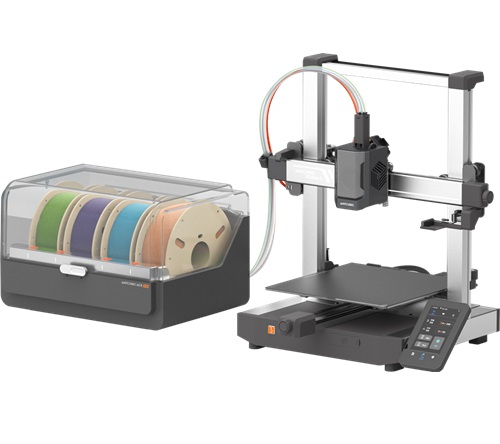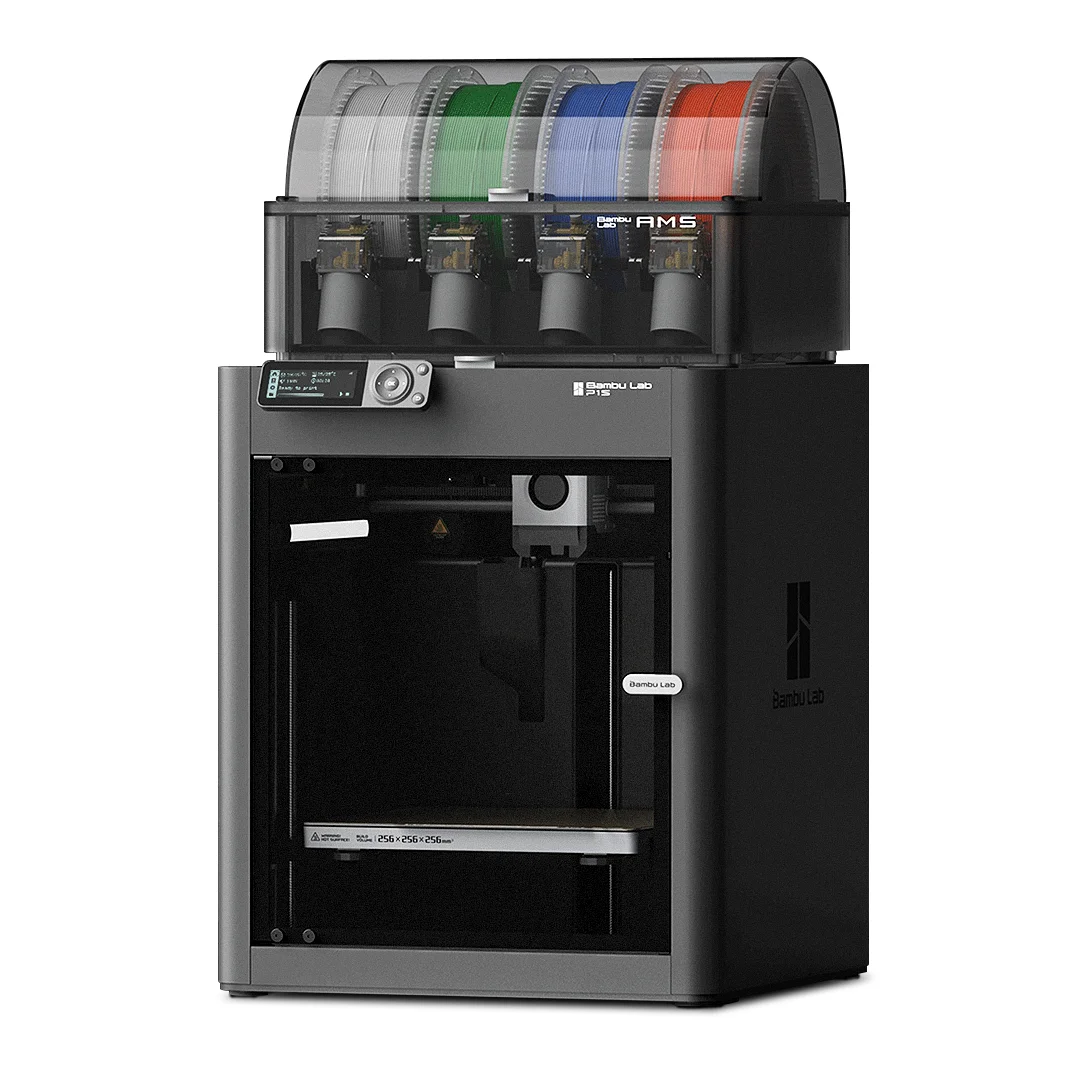Compare Kobra 3 Combo vs P1S
Comparison between the best 3D printers
Choose the best 3D printer at the best price. The cheapest 3D printers are here.
Buy a 3D printer here with 3D Fila.
 |
 |
|
| Model | Kobra 3 Combo[BUY Kobra 3 Combo] |
P1S[BUY P1S] |
| Printing Material | Filament | Filament |
| Buy Filament for Anycubic Kobra 3 Combo | Buy Filament forBambu Lab P1S | |
| Estimated price | $349,00 | $949,00 |
| Manufacturer | Anycubic | Bambu Lab |
| Release Year | 2024 | 2023 |
| Print Volume [mm] | 250x250x260 | 256x256x256 |
| Printer Size [mm] | 452x504x483 | 389x389x458 |
| Weight [kg] | 9,2 | 12,95 |
| Power Loss Recovery | YES | YES |
| Enclosed printer | NO | YES |
| Bed Leveling | Automatic | Automatic |
| Filament End Sensor | YES | YES |
| Bed type | Heated | Heated |
| Power supply system | Direct Drive | Direct Drive |
| Standard nozzle | 0,4 | 0,4 |
| Maximum Nozzle Temperature [°C] | 300 | 300 |
| Maximum Bed Temperature [°C] | 110 | 100 |
| Maximum printing speed [mm/s] | 600 | 500 |
| Filament holder | YES | YES |
| Camera for supervision | NO | NO |
| Recommended filaments | PLA, PETG, ABS, PP, HIPS | PLA, PETG, TPU, PVA, PA, PA-CF, Nylon, PC |
| Recommended slicers | Anycubic Slicer, Cura, Orca Slicer | Bambu Studio, Super Slicer, Cura, Prusa Slicer, Orca |
| Maximum Resolution [mm] | 0,1 | 0,1 |
| Processor | 32 bits | Quad ARM A7 1.2 GHz |
| Display | Touchscreen 4,3'' | Touchscreen 5'' |
| Power Supply | 400 W | 350 W |
| Connectivity | USB, Wi-Fi, Cloud | Wifi, Bambu bus, Cartão SD |
| Operating systems | Windows, Linux, Macbook | Windows, Linux, Macbook |
| Date of registration in the system | 2024-06-27 | 2024-04-11 |
| Release date | 2024 | 2023 |
| Extra features | The Anycubic Kobra 3 Combo offers advanced features, including multi-filament printing with the ACE (Anycubic Color Engine) system, allowing for quick switching of up to four filaments. It features automatic bed leveling, nozzle clogging detection, and integrated filament drying during printing. The printer supports technical materials such as ABS, ASA, Nylon, and PC, thanks to the hotend that reaches 300°C and the heated bed up to 110°C. In addition, it has a 4.3-inch touchscreen and compatibility with various slicers such as Anycubic Slicer, Cura, and Orca Slicer. | The Bambu Lab P1S stands out for its out-of-the-box practicality, eliminating the need for manual adjustments with automatic calibrations such as bed leveling and vibration compensation. It features multicolor printing capability through the AMS system, allowing up to 16 colors when connecting four AMS units. With an advanced control algorithm, the P1S offers fast printing speeds without sacrificing quality. Equipped with modern features such as filament end sensor, semi-automatic belt tension, direct extruder, welded frame and all-metal hotend, along with a fully enclosed chamber, the P1S promotes a superior printing experience, supporting a wide range of materials. |
| Support for multiple colors and materials (AMS and CFS) | YES | YES |
Notes * |
||
| Cost-benefit | 8 / 10 | 7 / 10 |
| Hardware | 4 / 10 | 5.6 / 10 |
| Tela | . | . |
| Print volume | 4 / 10 | 4 / 10 |
| Performance | 5 / 10 | 4 / 10 |
| [BUY Kobra 3 Combo] | [BUY P1S] |
Conclusion |
| In conclusion, the comparison between the Anycubic Kobra 3 Combo and the Bambu Lab P1S presents two capable 3D printers, each with distinct advantages that cater to different user needs and budgets. The Anycubic Kobra 3 Combo, priced more affordably, offers excellent value with features such as advanced multi-filament printing, automatic bed leveling, and compatibility with a wide variety of filaments. Its capabilities—especially in handling higher temperature materials—make it an attractive choice for users who prioritize versatility and economy. On the other hand, the Bambu Lab P1S, though more expensive, justifies its cost with a well-rounded set of advanced features, including faster print speeds and enhanced automatic calibration systems. Its enclosed design ensures better print quality and stability while the support for multiple colors expands creative possibilities. Ultimately, the choice between these two printers should be guided by budget constraints and specific printing needs. For users seeking a more budget-friendly solution with ample capabilities, the Kobra 3 Combo is a commendable option. Conversely, for those willing to invest in a more sophisticated, user-friendly machine with superior performance and features, the P1S is well worth considering. Both models score similarly in cost-benefit analysis, but differ significantly in terms of hardware complexity and overall user experience. Thus, the decision hinges on an individual's preferences in terms of performance, ease of use, and financial consideration. |

